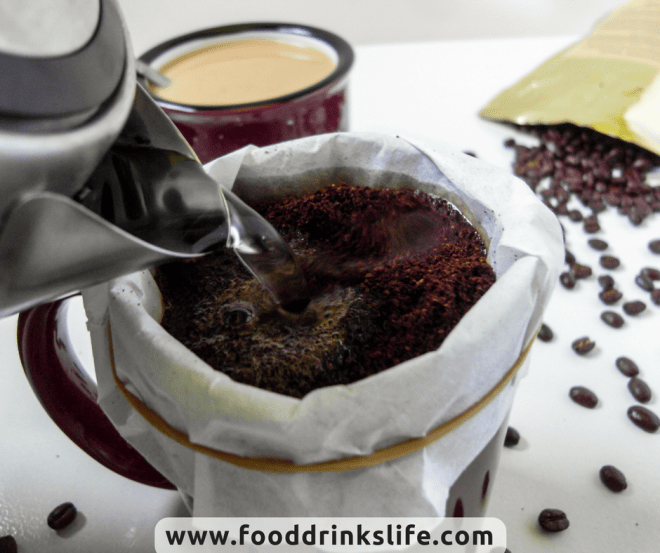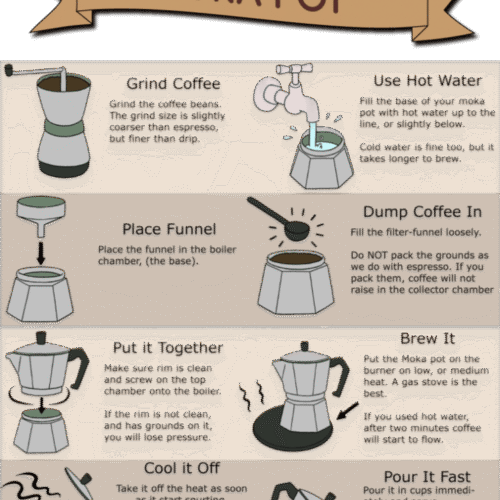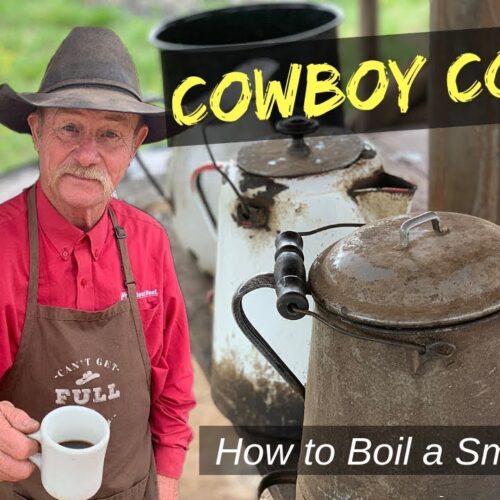To brew coffee without a coffee maker, use a saucepan or the pour-over method. A strainer and hot water are essential tools for these techniques.
Brewing coffee doesn’t always require sophisticated equipment; sometimes, a simple stovetop or manual pour-over will suffice. These traditional methods connect you to the basics of coffee preparation, offering a hands-on approach that can be deeply satisfying. Understanding the right grind size and water temperature is crucial to extracting the best flavor from your beans.
Whether you’re in a pinch without your regular brewer or embracing a minimalist approach, you can still enjoy a delicious cup of coffee. The key lies in mastering the fundamentals of heat, time, and proportion. With practice, you might find these low-tech brewing methods produce a cup that rivals your favorite coffee shop’s.
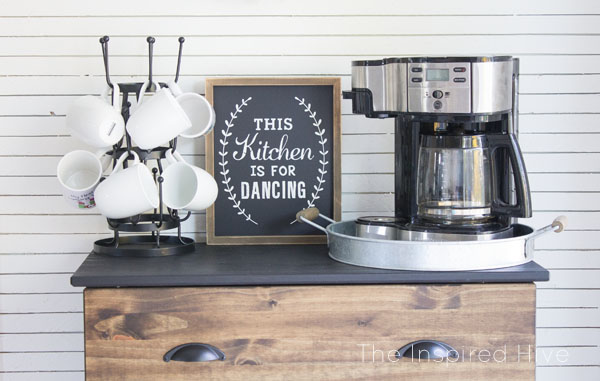
Credit: www.theinspiredhive.com
The Art Of Improvised Coffee Brewing
Welcome to the inviting realm of improvised coffee brewing. Picture this: a serene morning, coffee cravings hit, but there’s no maker in sight. Fear not! Brewing coffee without a machine is an art, an echo of traditional methods that coffee aficionados swear by. It’s creative, simple, and surprisingly, can yield a cup that rivals your favorite café’s concoction.
Celebrate Simplicity With Manual Techniques
When electricity and machines are unavailable, turn to the classic methods that celebrate simplicity and patience. Below are manual techniques that require just basic kitchen tools:
- Cowboy Coffee: Boil water, add coffee, let it brew, then pour carefully.
- Kettle Brew: Use a kettle, brew as with cowboy coffee, but strain with fine cloth.
- Mug and Spoon: Stir hot water and coffee in a mug, then let grounds settle down.
These simple, manual techniques reintroduce the hands-on pleasure of crafting a cup from scratch.
Unlocking The Aroma Without Gadgets
The absence of a coffee maker need not compromise the quality and aroma of your brew. To fully extract the essence of coffee beans without gadgets:
- Pour hot water over grounds in a circular motion to evenly extract flavors.
- Let the mixture steep, allowing time for the coffee’s oils and aromatic compounds to release.
- Carefully separate the spent grounds from the liquid, using a makeshift filter like a cloth or fine mesh.
These techniques highlight the potential to create a flavor-rich cup through improvised means.
Essential Tools For No-machine Coffee
Craving for a cup of coffee but don’t have a coffee maker at hand? Fear not! There is no need to miss out on your favorite brew. You can create a phenomenal cup of coffee with items already in your kitchen. Let’s explore the essentials that will turn you into a no-machine barista in no time.
Kitchen Items To Repurpose For Brewing
Repurposing common kitchen items for coffee brewing is both clever and convenient. Here are some tools you can transform into your coffee-making allies:
- Strainer: Acts as a makeshift sieve for grounds.
- Jar: Shakes up a cold brew blend.
- Small Pot: Simmers coffee on the stove.
- Ladle & Bowl: Helps with the pour-over method.
- Tea Towel: Filters out the coffee grounds.
Making The Most Of What You Have
Great coffee does not need fancy equipment. Unlock the potential of everyday items:
- Heat Water: Use a pot to bring water to a near-boil.
- Ground Coffee: Measure your coffee grounds.
- Combine: Mix hot water and grounds in a cup.
- Steep: Let the blend sit for a few minutes.
- Strain and Enjoy: Use your makeshift strainer.
Perfecting these steps elevates your skill set. You’ll brew coffee like a pro, with or without a machine. Remember, experimentation brings out the best in your cup!
Method 1: Stove-top Cowboy Coffee
Craving a robust cup of coffee but no coffee maker in sight? No problem! Discover the rustic charm of brewing coffee with the stove-top cowboy method. This timeless technique brings out a hearty flavor from your favorite beans. Let’s dive into the world of cowboy coffee, where simplicity meets boldness and tradition.
Boiling Your Way To A Robust Cup
The first step is finding a good pot. A saucepan works just fine. Fill it with water – about one cup for every desired mug of coffee. Next, turn on the stove and let the water heat up. It’s important not to rush; just let the water warm up slowly.
- Add coffee grounds when the water is hot, but not boiling. The perfect measure is one tablespoon per cup of water.
- Stir the mixture gently.
- Bring it to a gentle boil.
- After two minutes, turn off the heat.
- Wait for another four minutes, allowing the grounds to settle at the bottom.
Mastering The Pour To Avoid Grounds
Pouring is an art! It’s all about keeping those pesky grounds out of your cup.
- Start with a steady hand and a slow pour. Aim for the center of your cup.
- Use a ladle or a small cup to carefully serve the coffee from the pot.
- If you have a fine mesh strainer, place it over your cup to catch any unwanted grounds.
- No strainer? No issue! Let the coffee sit for a bit longer, and the grounds will settle more.
- Another trick is to pour a little cold water into the pot. It helps the grounds to settle faster.
Now, sit back and enjoy a cup of nostalgia. Stove-top cowboy coffee isn’t just steamy and delightful; it’s a nod to the past, crafted with your own hands!
Method 2: Microwave Mug Magic
Imagine a morning without your coffee maker. No need to worry. The Microwave Mug Magic method allows anyone to brew a comforting cup with just a microwave and a few simple tools. This approach is perfect for busy mornings, office breaks, or when your coffee machine decides to take an unexpected day off. Let’s dive into this convenient brewing technique.
Microwaving Your Brew – Quick And Easy
Start by placing one to two tablespoons of your favorite ground coffee into a microwave-safe mug. Next, fill the mug with water, leaving about an inch of space at the top. Stir the mixture to ensure the coffee grounds are well-saturated. Place the mug in the microwave and set it on high for about 1.5 to 2 minutes, keeping an eye on it. Once done, wait for the grounds to settle at the bottom or use a spoon to filter them off before taking your first sip of freshly ‘mugged’ brew.
Tips To Avoid Overflows And Mishaps
- Leave room at the top: Always leave space to prevent overflow.
- Stir before microwaving: This prevents the coffee from clumping together.
- Monitor the microwave: Watch for overflows.
- Let it stand: Let the mug sit for a minute after microwaving to let grounds settle.
- Use a deeper mug: To ensure no spills, a larger mug always helps.
Method 3: The Bag-it Technique
Lost your coffee maker or out on a camping trip? No problem! Meet the Bag-it Technique, an easy way to brew coffee without a machine. This method gives you a simple, mess-free way to enjoy your favorite brew anywhere.
Homemade Coffee Bags For Single Servings
Think of tea bags, but for coffee! Here’s how to make your own:
- Measure your coffee grounds – one serving equals one tablespoon.
- Cut filter paper into a square about 5 inches on each side.
- Place grounds in the middle of the square.
- Gather the edges of the filter and tie them with string, making a small pouch.
- Steep the bag in hot water for about 4 minutes, then remove and enjoy!
Choosing The Right Filter Material
Not all filters are created equal. The right one makes your coffee taste great.
| Material | Benefits |
|---|---|
| Cheesecloth | Reusable and eco-friendly |
| Paper Towel | Readily available and disposable |
| Fine Mesh Fabric | Durable and fine for filtering coffee grounds |
Select a material that is strong enough to hold the grounds while letting the flavor through. Ensure it does not rip when wet!
Method 4: The Strainer Method
Brewing coffee doesn’t always need high-tech gadgets. For those who love a hands-on approach, the Strainer Method offers a delightful way to make coffee. All you need is a strainer, hot water, and, of course, your favorite coffee grounds. Let’s explore how you can master this traditional technique to enjoy a robust cup of coffee.
Using A Fine Mesh For Coffee Filtering
Finding the right kind of strainer is crucial for this method. A fine mesh strainer works best. Choose one that fits over your mug or a heat-resistant glass.
- Place the strainer on top of your cup.
- Fill it with the desired amount of coffee grounds.
- Ensure the mesh is fine enough to prevent grounds from slipping through.
Balancing Time And Temperature
The quality of your brew hinges on the balance between steeping time and water temperature. Use hot water, but not boiling, as extreme heat can burn your coffee, leading to a bitter taste.
- Heat water until it’s just about to boil.
- Gently pour the hot water over the grounds in the strainer.
- Let the coffee steep for about four minutes.
- Stir halfway through to ensure even extraction.
Method 5: The French Press Faux-pas
Welcome to Method 5: The French Press Faux-Pas, your innovative solution for when a real French press isn’t at hand. This clever technique utilizes household items to mimic the rich and robust brew that a French press offers. Let’s explore how you can achieve that same gourmet flavor without the traditional equipment.
Mimicking A French Press With A Jar
Imagine you crave that perfect cup of coffee but lack a French press. Fear not! A simple jar can come to the rescue. Here’s what you need:
- A clean jar with a lid
- Freshly ground coffee
- Hot water just off the boil
Fill the jar with hot water and coffee grounds. Secure the lid and give it a good shake. Let the coffee steep for about 4 minutes. After steeping, you’ll need something to strain the grounds. A fine mesh sieve or a cheesecloth works wonders for this purpose.
The Importance Of The Plunge Action
The essence of a French press is in the plunge. It separates the coffee grounds from the liquid, leaving you with a clear, bold brew. To replicate this without a French press, follow these steps:
- After steeping, remove the jar lid.
- Place your strainer atop a heatproof mug or carafe.
- Slowly pour the brew through the strainer, mimicking the plunging action.
- Wait until all liquid passes through, leaving the grounds behind.
The gentle pour emulates the press method, trapping the grounds while allowing the full-flavored coffee to fill your cup. For best results, apply steady pressure and speed when pouring.
By mastering the jar shake and the careful pour, you essentially create a French press experience without the need for specialized gear. Bold, aromatic, and nuanced, your brew stands testament to resourcefulness and creativity. Enjoy your cleverly crafted coffee!
Method 6: The Saucepan Technique
Imagine you’re craving a warm cup of coffee, but there’s no coffee maker in sight. Fear not, as the saucepan technique comes to the rescue. This old-school method, often overlooked, might just become your favorite brewing ritual. It delivers a bold and satisfying coffee using tools you already have in your kitchen. Ready to learn how? Let’s dive into Method 6: The Saucepan Technique.
Simmering Your Coffee Grounds
When a coffee maker is out of reach, a simple saucepan can save the day. Follow these steps to simmer a perfect brew:
- Fill a saucepan with water — measure about one cup per coffee serving.
- Bring the water to a gentle boil.
- Add your coffee grounds directly into the boiling water. Use about two tablespoons per cup.
- Stir the mixture and let it simmer for about two minutes.
- Remove the saucepan from the heat and let it stand for an additional four minutes. This allows the flavors to fully develop.
How To Settle Grounds Without A Filter
Settling the coffee grounds is straightforward. Here’s a foolproof way to do it:
- After simmering, let the coffee stand for a few minutes. The grounds will naturally settle to the bottom.
- Gently pour the coffee into your cup, making sure to leave the settled grounds behind.
- If some grounds sneak into your cup, don’t worry! They’re safe to consume and can add depth to your coffee’s flavor.
Tip: Pour the coffee over a spoon to help ensure the grounds stay at the bottom of the pan.
Method 7: Immersion Brewer Experiment
Welcome to the Immersion Brewer Experiment, an exciting way to enjoy coffee. This method doesn’t need a coffee maker. Grab a mug, some hot water, and your favorite coffee grounds. Let’s dive into a simple and enjoyable brewing process. Follow these steps for a delightful cup of coffee using items you already have at home.
Steeping Grounds In Hot Water
Steeping is like making tea but with coffee grounds. Begin with this easy process:
- Boil water in a kettle or pot.
- Measure 2 tablespoons of coffee for every 6 ounces of water.
- Place coffee grounds in a heatproof container.
- Pour hot water over the grounds, ensuring all are submerged.
- Stir the mixture gently to combine.
- Cover the container and let it sit for about 4 minutes.
During steeping, coffee flavors infuse into the water. This creates a strong brew. Adjust steeping time for a lighter or bolder taste.
Separation Methods For A Clean Cup
After steeping, you need to separate the grounds from the liquid for a smooth, clean coffee. Here are methods to do this:
| Method | Tools Needed | Steps |
|---|---|---|
| Strainer Method | Mesh strainer or cheesecloth |
|
| Decanting Method | None |
|
| French Press Plunger | French press (optional) |
|
The right separation method gives you a crisp, flavorful cup of coffee. Try each method to find your favorite. Enjoy your homemade immersion brew!
Choosing The Right Coffee Grounds
Imagine waking up to the aroma of a rich coffee, but there’s no coffee maker in sight. Fear not! The right coffee grounds can still lead you to a delicious brew. Let’s explore how to choose the best coffee grounds for a maker-free experience.
Pre-ground Vs Freshly Ground Beans
The first decision in your coffee journey is choosing between pre-ground and freshly ground beans. Pre-ground coffee is convenient and quick. Freshly ground, on the other hand, boasts peak flavor and aroma. A simple manual grinder can unlock the full potential of your coffee beans.
- Pre-ground coffee speeds up your routine. It’s suitable for those on the go.
- Freshly ground beans require effort but reward you with a superior cup.
The Grind Size For Various Methods
Selecting the correct grind size is vital for your brewing method. Each method needs a specific grind for the best taste.
| Method | Grind Size |
|---|---|
| Cowboy Coffee | Coarse |
| Steep & Strain | Medium-Coarse |
| Coffee Bag | Medium |
| Microwave Brew | Variable |
Remember:
- Coarse grounds suit methods like cowboy coffee.
- Medium grinds are perfect for a coffee bag or steeping.
- Fine grounds could lead to over-extraction and bitterness.
Temperature And Time: Key Variables
Brewing coffee without a maker seems tricky. Fear not. Two big playmakers are temperature and time. They shape the taste and strength of your coffee. Let’s dive into the specifics.
Optimal Brewing Temperatures
Not too hot or cold, Goldilocks had it right. The perfect coffee temperature is key. Between 195°F to 205°F (90°C to 96°C) is the sweet spot. Use a thermometer to check. If you don’t have one, boil water and let it sit for 30 seconds. That’s about right for brewing.
| Coffee Type | Temperature |
|---|---|
| Fine grind | 205°F (96°C) |
| Coarse grind | 195°F (90°C) |
Steeping Times For Different Methods
Like baking a cake, time matters for coffee too. Different brews need different clock ticks. Here’s a simple guide:
- French Press: 4 minutes for a bold flavor
- Cold Brew: 12 hours in the fridge for smoothness
- Cowboy Coffee: 3 minutes, then let grounds settle
Watch the clock or set a timer. It will make your coffee just right. Remember, too long gets bitter, too short is weak. Now, get brewing and enjoy the perfect cup!
Advanced Tips For Enhanced Flavor
Discover the secrets to brewing a heavenly cup of coffee, even without a machine. Dive into advanced strategies for extraordinary flavor. Elevate your coffee game with these savvy tips!
Water Quality And Its Impact On Taste
The key to a divine cup of coffee lies in the water you use. Unsuitable water can ruin the perfect coffee ground. Follow these pointers for water that transforms your brew:
- Use filtered or bottled water: This is crucial for a clean taste.
- Avoid tap water: It may contain chlorine or minerals affecting flavor.
- Ideal temperature matters: Aim for water just off the boil, about 195°F to 205°F.
Remember, great water equals great coffee. Consider installing a water filter if your tap water is not up to par.
Unexpected Ingredients For A Flavor Boost
Enhance your coffee’s flavor and aroma with simple, unexpected ingredients. Here’s how to surprise your taste buds:
| Ingredient | Flavor Notes | Usage |
|---|---|---|
| Cinnamon | Warm and spicy | Add a small stick during brewing |
| Nutmeg | Sweet and nutty | Sprinkle a dash in your ground coffee before brewing |
| Cardamom | Exotic and aromatic | Crush a pod and mix with coffee grounds |
| Vanilla Extract | Sweet and creamy | Add a few drops to your cup before pouring coffee |
These ingredients introduce a delightful twist to your standard brew. Experiment to find your favorite blend!
Troubleshooting Common Problems
Mastering coffee brewing without a machine has its quirks. This section addresses issues you might face. By understanding these aspects, you can enjoy better homemade coffee.
Dealing With Over-extraction
Over-extraction happens when coffee grounds contact hot water too long. The result is a harsh, bitter brew. To fix it, try these steps:
- Reduce brewing time. Less contact prevents bitterness.
- Stir less. Over-stirring further extracts unwanted flavors.
- Use coarser grounds. They extract slower, balancing flavor.
- Lower water temperature. Aim for 195°F to 205°F, avoiding over-extraction.
Mitigating Bitterness And Acidity
Too much bitterness or acidity can ruin coffee. Better brewing tweaks help. Try:
- Adjusting coffee-to-water ratio. Use 1 to 2 tablespoons of coffee per 6 ounces of water.
- Choosing darker roasts. They’re less acidic.
- Adding a pinch of salt. It softens bitterness.
Remember, coffee personal preferences differ. Always note what works for you!
Cleaning Up After Brewing
Mastering the art of coffee brewing without a maker is only half the battle. Cleaning up is just as crucial to maintain a tidy space and prepare for your next coffee adventure. Below are simple yet effective ways to clean up, dealing with everything from your used coffee grounds to the leftover residue.
Efficient Clean-up Strategies
Swift action prevents stains and odors. Follow these steps for a quick and thorough clean-up:
- Empty used coffee grounds immediately into the compost or trash.
- Quickly rinse your brewing equipment with hot water to avoid residue build-up.
- Use a damp cloth to wipe down all surfaces that might have coffee splatters.
- Allow all parts to air dry before storing to prevent mold and mildew growth.
Disposal Of Coffee Grounds
Used coffee grounds offer surprising benefits beyond brewing. Here are eco-friendly ways to dispose of them:
| Method | Benefits |
|---|---|
| Composting | Enriches soil with nutrients |
| Gardening | Repels pests and fertilizes plants |
| Beauty | Exfoliates skin in homemade scrubs |
| Cleaning | Abrasive nature helps scrub away grime |
Remember to cool the grounds before any disposal method. This protects plants and skin from heat. Say goodbye to guilt and hello to a green, clean kitchen.
Eco-friendly Brewing Without Electricity
Imagine waking up to the smell of fresh coffee, brewed without plugging in a single gadget. This isn’t just a way to start your day—it’s a step towards a greener globe. Let’s explore brewing that’s kind to the Earth.
Conserving Energy With Manual Methods
Brewing coffee sans electricity isn’t just possible; it’s delightfully simple. Embracing traditional techniques not only slashes energy bills but also elevates your morning ritual. Here’s how:
- Boil water using a stovetop kettle or a pan.
- Pour-over method: Place grounds in a filter over your cup. Slowly pour hot water over the grounds.
- French press: Combine grounds and hot water in a press, wait a few minutes, then push the plunger down.
- Cold brew: Steep grounds in cold water overnight. Strain in the morning for a smooth cup.
Each method offers a unique taste experience. You control every step, from grind to pour.
The Environmental Perks Of No-machine Brewing
No electricity, no problem! Manual coffee brewing is not just a back-to-basics approach but a choice with positive environmental implications:
- Less waste: No pod or capsules mean less plastic and metal in landfills.
- Compost your grounds: Used coffee grounds can enrich soil, not trash bins.
- Reduced manufacturing impact: Without the need for electric coffee makers, you support less factory output.
Every cup you brew manually is a vote for a healthier planet. A simple change in your routine can brew a brighter future.

Credit: oddlycorrect.com
Taste Comparison: Machine Vs. Manual Brew
Exploring different brewing methods reveals distinct flavors in coffee. The debate between machine and manual brews is not just about convenience. It’s also about the nuances in taste that each method brings out. Let’s dive into the characteristics of hand-brewed coffee and the subjective preferences that guide coffee enthusiasts in their daily ritual.
The Character Of Hand-brewed Coffee
Manual brewing methods, like French press, aeropress, and pour-over, offer more control over brewing variables. This control often results in a richer flavor profile. Let’s look at how hand-brewed coffee differs:
- Texture: Often smoother due to natural oils and fine grounds.
- Aroma: More pronounced, as the process highlights the bean’s natural bouquet.
- Taste: Nuances are more detectable; you may find notes of chocolate, citrus, or berry.
- Temperature: Typically easier to control, affecting flavor extraction.
Subjective Preferences In Coffee Preparation
Personal taste plays a huge role in the manual vs. machine debate. While some adore the convenience and consistency of machine brews, others prefer the authentic experience of manual preparation. Here’s what influences preferences:
| Preference Factor | Machine Brew | Manual Brew |
|---|---|---|
| Flavor Consistency | High – same every time | Varies – based on technique |
| Preparation Time | Quick – push of a button | Longer – involves careful steps |
| Craftsmanship Feel | Low – machine does the work | High – handcrafted cup |
| Skill Required | Minimal – user-friendly options | Moderate to High – practice makes perfect |
Incorporating No-maker Brewing Into Your Routine
Whether you’re out camping or your coffee maker breaks, brewing coffee without a machine is handy. It’s simple and adds a personal touch to your morning ritual. Let’s explore how to transform this skill into a seamless part of your day.
Making Manual Brewing A Habit
Start with consistency to make manual brewing part of your morning routine.
- Choose a specific time for coffee making.
- Prepare your coffee station with necessary tools.
- Use fresh, quality beans for the best taste.
Keep your equipment like filters and grinders within reach to save time.
Experiment with flavors to find your perfect brew and keep the excitement alive.
Pairing Methods With Your Lifestyle
Match your coffee routine with your daily activities for a smooth experience.
| Lifestyle | Brewing Method |
|---|---|
| Busy Mornings | Quick-steeped Cowboy Coffee |
| Outdoor Adventures | Portable French Press |
| Quiet Weekends | Slow Pour-over Technique |
Pick a method that fits your pace and enjoy the convenience every day.
Favorite Recipes For Coffee Drink Variations
Ever wondered how to still enjoy a cup of coffee when there’s no coffee maker in sight? Welcome to ‘Favorite Recipes for Coffee Drink Variations’, where lack of machinery is no barrier to a delicious brew. We will explore ways to maintain your coffee ritual using simple methods that require minimal equipment. From aromatic infusions to rich, creamy concoctions, delight in these hand-picked recipes that will transform your regular coffee routine into an art form.
Adapting to no-machine recipesAdapting To No-machine Recipes
Without a coffee maker, you can still enjoy an aromatic cup. Try these methods with just a few kitchen tools:
- Cowboy Coffee: Boil water, add coffee grounds, and let it stand. Strain after a few minutes.
- French Press without a French Press: Simulate the French press method by using a bowl to steep coffee and a strainer to separate the grounds.
- Moka Pot Magic: If you have a Moka pot, boil water and brew on the stovetop for a strong espresso-style coffee.
Each recipe delivers a unique taste and experience. For new flavors, add spices like cinnamon or nutmeg during the brewing process.
Creative twists on classic coffee drinksCreative Twists On Classic Coffee Drinks
Beyond traditional brewing, these twists on classic coffee drinks add adventure to your cup:
- Iced Coffee Cubes: Freeze coffee into cubes and pour milk over them for a slow-melting iced drink.
- Coffee Smoothie: Blend cold brew with bananas, a spoonful of peanut butter, and a dash of cocoa for a coffee-infused smoothie.
- Sweet & Spicy Coffee: Stir honey and a pinch of chili powder into your brewed coffee for a sweet kick.
Explore these recipes and others to find your no-coffee-maker favorite!
Final Thoughts On Maker-free Brewing
Many coffee lovers find themselves without a coffee maker at times. This doesn’t mean you can’t enjoy a rich cup of your favorite brew. In this final section, we will explore why embracing the simplicity of manual brew methods can lead to some of the finest coffee experiences.
Embracing The Simplicity
Simplicity often leads to perfection, especially when it comes to brewing coffee. Without the bells and whistles of a machine, you’re in full control. You measure, pour, and extract the flavor directly. It’s coffee brewing in its purest form. Think of it as a return to basics, a chance to focus on the art of coffee making.
- Direct control over temperature and brewing time
- Awareness of coffee’s transformation during brewing
- Space-saving with no need for bulky equipment
Why Manual Brew Might Just Be Your Best Cup
Manual brewing methods, like the French press or pour-over, can unveil subtle flavors that machines often miss. Each method has its own charm, and each brings something special to your cup. Manual brewing is a craft that rewards patience and attention to detail.
| Manual Method | Key Benefit |
|---|---|
| French Press | Full-bodied flavor |
| Pour-Over | Precise flavor extraction |
| AeroPress | Rich and smooth taste |
| Cold Brew | Smooth and sweet with less acidity |
By using a manual method, you not only craft the perfect cup but also connect with the process itself. Exploring different techniques could lead you to discover your personal best cup of coffee.
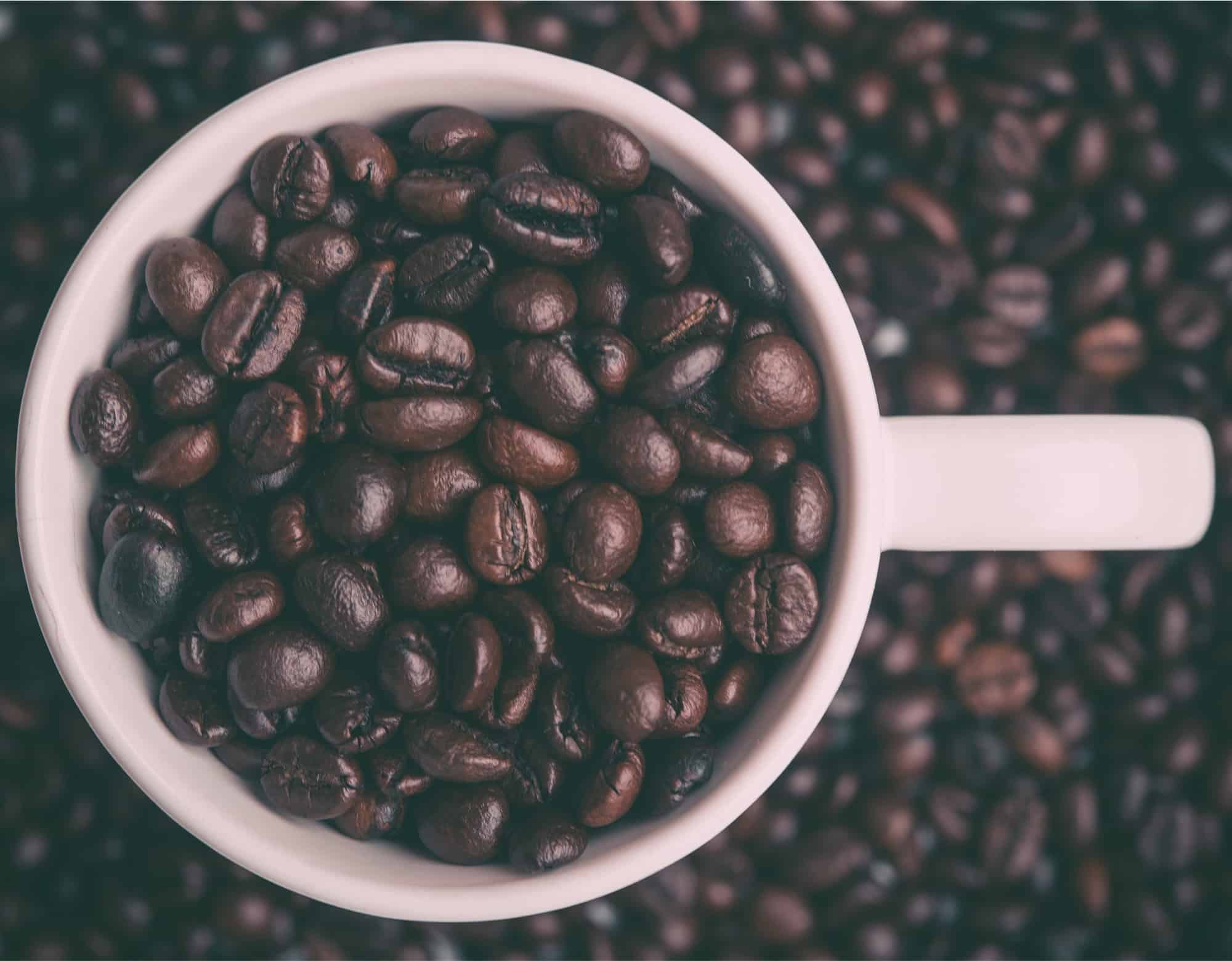
Credit: driftaway.coffee
Frequently Asked Questions Of How To Brew Coffee Without A Coffee Maker
Can I Brew Coffee Without A Machine?
Yes, you can brew coffee by using alternative methods such as a stovetop, using a strainer or a saucepan.
What Are No-machine Coffee Brewing Methods?
Common no-machine brewing methods include French press, cowboy coffee, and steeping grounds directly in hot water.
Is Boiling Coffee Grounds An Option?
Boiling coffee grounds is a traditional method often termed as “cowboy coffee” and it can produce a strong brew.
Can You Use A Tea Infuser For Coffee?
Using a tea infuser for coffee is possible; fill it with coffee grounds and steep in hot water like tea.
How To Make Coffee With A Strainer?
To make coffee with a strainer, pour hot water over coffee grounds in a jug and then strain into your cup.
What Is Cowboy Coffee?
Cowboy coffee is a method where grounds are boiled in water and then allowed to settle before drinking.
Conclusion
Brewing coffee without a machine becomes simple with these methods. Embrace the joy of manual preparation, savoring each step. Remember, great coffee doesn’t always need high-tech gear. Pour yourself a cup of your handcrafted brew and cherish the personal touch you’ve added.
Happy brewing!




